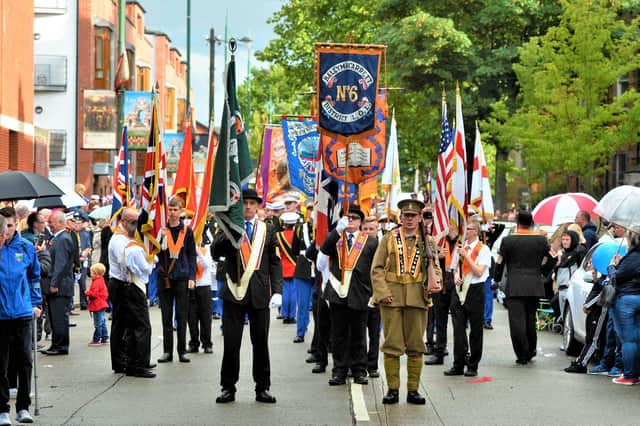Two major parades taking place on Friday – one in Coleraine, one in Belfast – to mark the start of the Battle of the Somme


There will be a large-scale march in east Belfast involving some 31 bands, and another in Coleraine involving 20 bands.
TheBelfast march begins in Templemore Avenue in the east of the city at 7pm, with 2,100 notified participants.
Advertisement
Hide AdAdvertisement
Hide AdIt will proceed south to Willowfield, then east to Bloomfield and North Road before looping back towards Templemore via the Belmont and Holywood Roads – the same route which has been followed for decades.
Sometimes called the “mini-Twelfth” the parade is organised via Ballymacarrett District LOL6.
As in previous years, the Short Strand Residents’ Association (from the republican enclave of the same name) has complained about it and conditions have been imposed on the march – mainly that only hymns are to be played on the Albertbridge Road, which passes the enclave.
Meanwhile in Coleraine, the march is slated to involve 1,000 participants, and begins at 6.50pm at Killowen Orange Hall, proceeding through the neighbouring estate, over the old Bann Bridge, and to the Diamond war memorial.
Advertisement
Hide AdAdvertisement
Hide AdHowever, conditions have been imposed which split up the parade, and limit it to only the host lodge and one band entering The Heights district, with no supporters.
The battle which began on July 1 continued well into wintertime of 1916, involving – among others – the 36th (Ulster) Division and the 16th (Irish) Division.
According to an account given of the battle by the British National Archives: “The strategy of limited attacks using rapidly moving and well-protected infantry was abandoned in favour of an attack over a 20-mile area, in which the infantry proceeded towards enemy lines in slow, rigid formations that provided easy targets for German machine-guns.
“As both private and operational sources illustrate, the first day of the battle, 1 July 1916, was a bloody failure: 20,000 of the 120,000 men who attacked were killed.
Advertisement
Hide AdAdvertisement
Hide Ad“The territorial gains bought by this sacrifice were minimal.”
By the end of the battle, it says: “While German casualty rates were indeed high - roughly 450,000 men killed or wounded – Britain and France fared even worse, with a combined total of 650,000 casualties.”